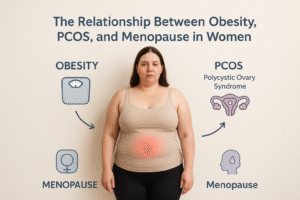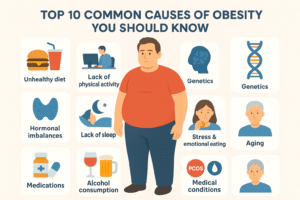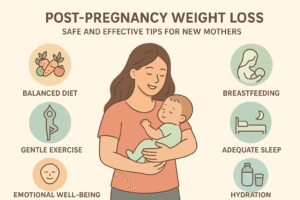Intermittent Fasting: A Trend With Health Benefits

Fasting has been practiced for centuries, primarily for religious reasons, but it has gained significant popularity in recent years—especially as a weight loss strategy. Celebrities like Hugh Jackman, Jimmy Kimmel, and others have adopted intermittent fasting, bringing even more attention to this diet approach.
What is Intermittent Fasting?
Intermittent fasting (IF) is not about what you eat but when you eat. It’s a dietary pattern that involves alternating periods of fasting and eating. This approach has become a favorite among those looking to manage their weight and improve overall health.
Popular Methods of Intermittent Fasting
There are several ways to approach intermittent fasting, depending on personal preferences and lifestyle. The most common methods include:
- 24-Hour Fasting : Fast for 24 hours once or twice a week. During fasting, only water, coffee, and non-caloric beverages are allowed.
- The 5:2 Method : Eat normally for 5 days of the week, while restricting calories to 500-600 kcal per day on the remaining 2 days.
- Alternate Day Fasting : Fast every other day. You can either go without food completely or limit yourself to 500-600 kcal on fasting days.
- The 16/8 Method : Fast for 16 hours and eat during the remaining 8 hours of the day.
What Happens During Fasting?
During fasting, after several hours, blood glucose levels drop. As glucose is absorbed by cells, the pancreas releases glucagon to signal the liver to break down glycogen into glucose, which is then released into the bloodstream to provide energy.
When glycogen stores are depleted, the body turns to alternative fuel sources such as fatty acids and proteins. Additionally, fasting triggers a process known as autophagy, where cells digest and remove old, dysfunctional proteins. This cellular repair may also be linked to protection against diseases, according to some studies.
Health Benefits of Intermittent Fasting
Intermittent fasting offers several potential health benefits, including:
- Weight Control: Helps in weight management, primarily if calorie intake is reduced during fasting periods.
- Decreased Insulin Resistance: May improve insulin sensitivity, reducing the risk of type 2 diabetes.
- Reduction in Inflammation: Studies suggest that fasting can lower inflammation in the body.
- Improved Heart and Brain Health: Can promote heart health and protect against cognitive decline.
- Anti-Aging and Stress-Reduction Benefits: Fasting may reduce stress and have anti-aging effects due to cellular repair processes.
Who Would Benefit from Intermittent Fasting?
Intermittent fasting might be suitable for individuals who:
- Tend to snack on unhealthy items throughout the day.
- Frequently skip meals or find it hard to stick to regular eating schedules.
Who Should Avoid Intermittent Fasting?
Intermittent fasting is not recommended for everyone. It’s not suitable for:
- People with diabetes (type 1 or type 2) due to blood sugar regulation concerns.
- Nursing mothers or pregnant women.
- Athletes training for endurance events (e.g., marathons).
- Children and teenagers who are in active growth stages.
- Individuals with medical conditions requiring medication to be taken with food.
- People with eating disorders (e.g., anorexia, bulimia).
Tips for Successful Intermittent Fasting
To get the most out of intermittent fasting, keep these tips in mind:
- Stay Hydrated : Drink plenty of water to prevent dehydration.
- Include High-Fiber Foods : Help prevent constipation by including fiber-rich foods.
- Include Protein : Incorporate high-quality protein sources to support muscle health.
- Avoid Overeating : Be mindful not to overeat when breaking the fast, especially during breakfast hours.
Final Thoughts
Intermittent fasting can offer many health benefits if done correctly, but the key is to eat nutritious meals during eating windows and avoid overeating. As with any dietary change, it’s important to listen to your body and consult with a healthcare professional, especially if you have underlying health conditions.











